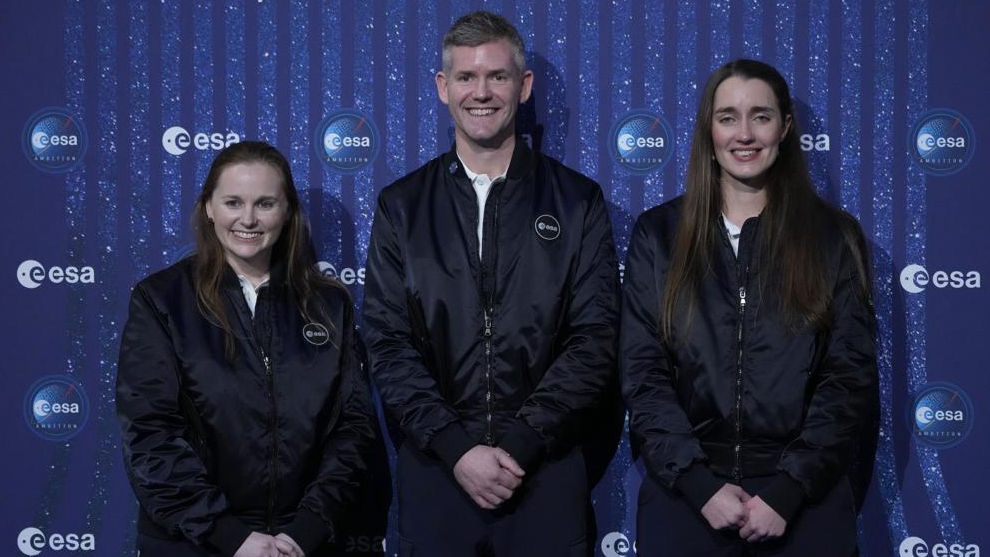
ESA's new parastronaut John McFall, new astronauts Meganne Christian
(L) and Rosemary Coogan (R) during the ESA Council at ministerial level at the Grand Palais Ephemere, in Paris, France, November 23, 2022. /AP
ESA's new parastronaut John McFall, new astronauts Meganne Christian
(L) and Rosemary Coogan (R) during the ESA Council at ministerial level at the Grand Palais Ephemere, in Paris, France, November 23, 2022. /AP
The European Space Agency (ESA) made history Wednesday by selecting an amputee who lost his leg in a motorcycle accident to be among its newest batch of astronauts – a leap toward its pioneering ambition to send someone with a physical disability into space.
John McFall, a 41-year-old Briton who lost his right leg when he was 19 and went on to compete in the Paralympics, called his selection at Europe's answer to NASA "a real turning point and mark in history."
"ESA has a commitment to send an astronaut with a physical disability into space ... This is the first time that a space agency has endeavored to embark on a project like this. And it sends a really, really strong message to humanity," he said.
The newly-minted parastronaut joined five career astronauts in the final selection unveiled during a Paris news conference – the conclusion of the agency's first recruitment drive in over a decade aimed at bringing diversity to space travel.
The list also included two women: France's Sophie Adenot and the UK's Rosemary Coogan, new ambassadors for another greatly underrepresented section for European astronauts.
McFall will follow a different path than his fellow astronauts because he will participate in a groundbreaking feasibility study exploring whether physical disability will impair space travel. It's uncharted land, since no major Western space agency has ever put a parastronaut into space, according to the ESA.
The feasibility study, that will last two to three years, will examine the basic hurdles for a parastronaut including how a physical disability might impact mission training, and if modifications to spacesuits and aircraft are required, for example.
ESA's Director of Human and Robotic Exploration David Parker said it was still a "long road" for McFall. It will be at least five years before McFall goes into space as an astronaut – if he is successful.
(With input from AP)